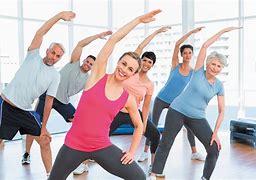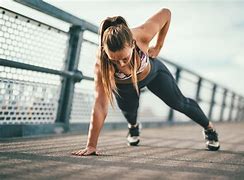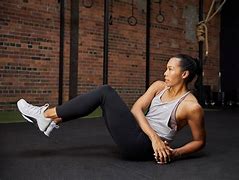Effective Exercises You Can Do at Home Without Any Gear
In a world where time is often scarce and gym memberships can be expensive, many people are turning to home workouts as a viable solution for staying fit. The beauty of exercising at home is that you don’t need any fancy equipment or a lot of space. With just your body weight, you can perform a variety of effective exercises that will help you build strength, improve your cardiovascular fitness, and enhance overall well-being. This article will provide you with a comprehensive guide to effective exercises you can do at home without any gear.

Why Choose Home Workouts?
Convenience and Flexibility
Imagine waking up, rolling out of bed, and starting your workout without having to commute to the gym. Home workouts offer unparalleled convenience. You can exercise whenever it fits into your schedule—whether it’s early in the morning, during lunch breaks, or late at night.
Cost-Effective Fitness
Let’s face it—gym memberships can be pricey. By working out at home, you save money that can be used for healthier food options or other essentials. Plus, you won’t have to invest in expensive equipment; your body weight is often enough!
Variety and Personalization
When you work out at home, you have complete control over your routine. Want to do yoga one day and high-intensity interval training (HIIT) the next? Go for it! You can tailor your workouts to fit your mood and energy levels.
Getting Started: Preparing for Home Workouts
Create Your Space
Before diving into exercises, carve out a dedicated workout space in your home. It doesn’t have to be large; just enough room for you to move freely. Clear away any clutter and set up a mat or towel for comfort.
Warm-Up is Key
Just as you wouldn’t start a car without warming it up, your body needs a proper warm-up too! Spend about 5-10 minutes doing dynamic stretches or light cardio to get your blood flowing and muscles ready.
Effective Bodyweight Exercises for Home
1. Push-Ups

Push-ups are a classic exercise that targets your chest, shoulders, triceps, and core.
How to Do It:
- Start in a high plank position with hands slightly wider than shoulder-width apart.
- Lower your body until your chest nearly touches the ground.
- Push back up to the starting position.
Tip: If standard push-ups are too challenging, try knee push-ups or incline push-ups using a sturdy surface like a table.
2. Squats

Squats are fantastic for strengthening your legs and glutes while also engaging your core.
How to Do It:
- Stand with feet shoulder-width apart.
- Lower your body as if sitting back into a chair.
- Keep your chest up and knees behind your toes.
- Return to standing.
Variations: Try jump squats for added intensity or single-leg squats if you’re feeling adventurous!
3. Planks
Planks are excellent for building core strength and stability.
How to Do It:
- Start in a forearm plank position with elbows directly under shoulders.
- Keep your body in a straight line from head to heels.
- Hold this position for as long as possible while maintaining good form.
Challenge Yourself: Try side planks or plank variations like plank jacks for an extra burn.
4. Lunges
Lunges work on balance while targeting the quads, hamstrings, and glutes.
How to Do It:
- Stand tall with feet together.
- Step forward with one leg and lower until both knees are bent at about 90 degrees.
- Push through the front heel to return to standing.
Tip: Alternate legs or try reverse lunges for variety!
Click Here to Read More on Home Exercises that do not Need Gym
5. Burpees
Burpees are a full-body exercise that boosts cardiovascular fitness while building strength.
How to Do It:
- Start standing tall.
- Drop into a squat position and kick your feet back into a plank.
- Perform a push-up (optional).
- Jump feet back toward hands and explode upward into a jump.
Warning: Burpees can be intense! Start slow if you’re new to them.
Adding Cardio Without Equipment
6. High Knees
High knees are an excellent way to get your heart rate up while working on leg strength.
How to Do It:
- Stand tall and jog in place while bringing knees up toward your chest as high as possible.
Tip: Pump your arms for added momentum!
7. Mountain Climbers
Mountain climbers combine cardio with core strength training.
How to Do It:
- Start in a high plank position.
- Quickly drive one knee toward your chest and then switch legs in a running motion.
Challenge: Increase speed for more intensity!
8. Jumping Jacks
Jumping jacks are a simple yet effective way to get moving!
How to Do It:
- Stand with feet together and arms at your sides.
- Jump up while spreading legs shoulder-width apart and raising arms overhead.
- Jump back to the starting position.
Fun Fact: You can mix in variations like cross jacks or star jacks for added fun!
Strengthening Your Core
9. Bicycle Crunches
Bicycle crunches target the obliques while also working the entire core.
How to Do It:
- Lie on your back with hands behind your head and legs lifted at 90 degrees.
- Bring one elbow toward the opposite knee while extending the other leg out.
Tip: Switch sides in a pedaling motion!
10. Russian Twists
Russian twists engage the core while improving rotational strength.
How to Do It:
- Sit on the ground with knees bent and lean back slightly.
- Hold hands together or clasp them behind your head.
- Twist torso side-to-side while keeping feet off the ground for added difficulty.
Variation: Hold onto a water bottle or any weighted object for extra resistance!
Flexibility and Recovery Exercises
11. Yoga Poses
Incorporating yoga into your routine enhances flexibility and promotes relaxation.
Recommended Poses:
- Downward Dog: Great for stretching hamstrings and calves.
- Child’s Pose: A restful pose that helps relieve tension in the back.
- Cobra Pose: Opens up the chest and stretches abdominal muscles.
12. Static Stretching
After completing workouts, static stretching helps cool down muscles and improve flexibility:
Examples:
- Hamstring Stretch: Sit on the floor with legs extended; reach toward toes.
- Quadriceps Stretch: Stand on one leg; pull the opposite foot toward glutes.
- Shoulder Stretch: Bring one arm across your body; use the other arm to hold it in place.
Designing Your At-Home Workout Routine
Creating Your Schedule
To reap maximum benefits from home workouts, consistency is key! Consider creating a weekly schedule that includes:
- Strength Training Days: Focus on bodyweight exercises targeting different muscle groups (e.g., upper body one day, lower body another).
- Cardio Days: Incorporate high-energy exercises like burpees or jumping jacks.
- Flexibility Days: Dedicate time for yoga or stretching sessions after workouts.
Setting Goals
Setting realistic fitness goals helps keep motivation high! Whether it’s increasing reps of an exercise or mastering new movements—celebrate small victories along the way!
Staying Motivated
Find Your Community
Working out alone can sometimes feel isolating—consider joining online fitness groups where members share tips, challenges, progress photos, or even virtual workout sessions!
Track Your Progress
Keeping track of progress not only motivates but also helps identify areas needing improvement—use apps or journals dedicated specifically towards fitness tracking!
Read This: Strength Training for Beginners: Your First Workout Plan
Conclusion
Exercising at home without any gear is not only possible but can also be incredibly effective! With various bodyweight exercises available—from push-ups and squats to yoga poses—you have everything you need right at home! By incorporating these techniques into regular routines while maintaining consistency over time—you’ll build strength, improve flexibility & enhance overall well-being—all without stepping foot inside a gym!
So what are you waiting for? Roll out that mat, put on some music (or enjoy silence), and get moving today! The journey toward fitness starts now—right where you are!
Meta Description: Discover effective exercises you can do at home without any gear! Get fit with bodyweight workouts that build strength & improve flexibility effortlessly!
FAQs About Home Workouts Without Gear
1. Can I really get fit without any equipment?
Absolutely! Bodyweight exercises like push-ups, squats, lunges, planks, and more effectively build strength without needing weights or machines.
2. How often should I work out at home?
Aim for at least three times per week; however, listen to your body—rest days are essential too! Consistency is key!
3. What if I’m new to exercising?
Start slow! Focus on mastering proper form before increasing intensity or duration; consider beginner-friendly routines designed specifically for newcomers!
4. Is it necessary to warm up before exercising?
Yes! Warming up prepares muscles & joints by increasing blood flow—this reduces injury risk significantly during workouts!
5. How long should my home workout sessions last?
Aim for about 30 minutes per session; however shorter bursts of activity throughout the day also count towards overall fitness goals!



Good